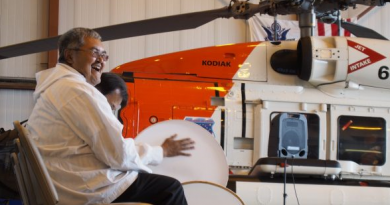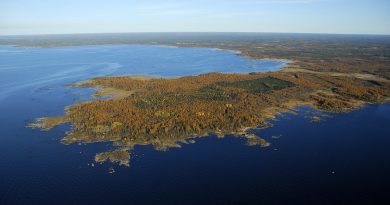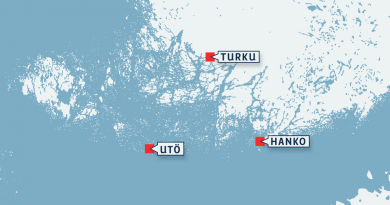COVID-19 surge casts shadow over tourism in Finnish Lapland

While relatively few infection cases so far involve foreign tourists, tourism operators are concerned about the impact tougher measures may have on the sector.
Finnish Lapland is seeing its highest coronavirus infection rates since the start of the pandemic.
Last week, a total of 276 infections were diagnosed in the regional hospital district, 46 of which were among foreign tourists. The proportion of tourists among all infections in Lapland rose from 3.5 percent to 16.5 percent in a week, according to Markku Broas, chief infectious diseases physician for the Lapland Hospital District.
Meanwhile, 61 infections were diagnosed in the Länsi-Pohja Hospital District last week, the area to the immediate southwest of Lapland, abutting the border with Sweden. So far there have been few among foreign tourists. Instead, cross-border shoppers are being diagnosed with the infection “all the time,” says Jyri J. Taskila, the district’s chief medical officer.
On the other hand, the need for hospital care has replaced infection rates as a key indicator of the severity of the pandemic. That too has increased.
“We can’t talk about capacity overload yet. We currently have five patients in hospital, having previously had one or none at all. There have been one or two patients in intensive care recently,” relates Broas.
In the Länsi-Pohja Hospital District, there were seven patients in hospital care as of Monday. A week ago, there were five.
The Omicron variant has not yet been detected in Lapland. However, the delay in confirming cases is one to two weeks. For example, last week’s tests in the the Länsi-Pohja district have not yet been analysed for the variant.
Other means before emergency brake
A surge in the number of infections, and the spread of the Omicron variant are creating pressure for the government to impose its so-called emergency brake.
Pasi Pohjola, strategy director of the Ministry of Social Affairs and Health, has estimated that almost all the criteria for the national emergency braking mechanism were already met over the past weekend.
According to Yle’s sources, changes in border practices have been under discussion in the government’s ministerial working group. This could mean that the Covid passport alone would not be sufficient for a person to enter the country, but each incoming passenger would be required to provide evidence of two negative Covid test results as well.
In Lapland’s tourism sector, the situation is being monitored with concern. For example, the winter tourist season at Lapland Hotels has got off to a good start and the hotel booking situation comparable to the record level seen in 2019.
“If we start demanding these tests before coming here and especially here on the spot, it will in practice stop international tourism,” says Ari Vuorentausta, CEO of the hotel chain.

Representatives of the hospital district, municipalities and coronavirus testing services held a virtual meeting on Monday to review the organisation of rapid antigen tests for foreign tourists, for example at airports when they arrive in Lapland.
“The private service providers of the municipalities were of the opinion that a solution for testing at the airport, for example, could be found, but municipality representatives agreed with the Lapland Hospital District that it would be best if the test were performed before the trip,” explains Markku Broas.
On the basis of previous experience, it would likely take at least an hour to complete rapid antigen tests for a planeload of air passengers.
“Before we start that, we need to take all possible measures to prevent the epidemic from deteriorating further, and overburdening primary care, specialist care and risking the availability of treatment,” Broas adds.
This includes maintaining tracing services and stressing the use of masks.
Test before coming
Markku Broas also hopes that in future international tourists to Lapland will be tested in their countries of origin before their trip begins. Among the Schengen member countries, for example, Switzerland requires a negative PCR test no more than 72 hours prior to travel. The test result must be presented before boarding the plane.
“That would be the easiest way to prevent infections,” Broas points out. .
Home tests, on the other hand are not as reliable. Finland’s THL recommends home testing, but says positive results should be confirmed by a lab.
Lapland Hotels’ Vuorentausta hopes that the current restrictions will be given a chance to work before any emergency measures are imposed. He points out that the disease is already prevalent among locals.
“There has been little [coronavirus] transmission to the local population. Contacts with the local population have been brief. Our clients are in practice double vaccinated, of course there are children who have not had the vaccine,” says Vuorentausta.
Related stories from around the North:
Canada: Another Nunavik community moved to yellow COVID-19 alert level in northern Quebec, Eye on the Arctic
Finland: Strong signs of tourism revival in Finland’s north, Yle News
Greenland: New strategy activated to manage COVID-19 outbreak in Upernavik, Greenland, Eye on the Arctic
Iceland: Iceland extends COVID-19 measures for at least two weeks, Eye on the Arctic
Norway: Norway imposes partial pre-Christmas COVID lockdown, The Independent Barents Observer
Sweden: Sweden to introduce new Covid-19 measures on Dec. 8, Eye on the Arctic



